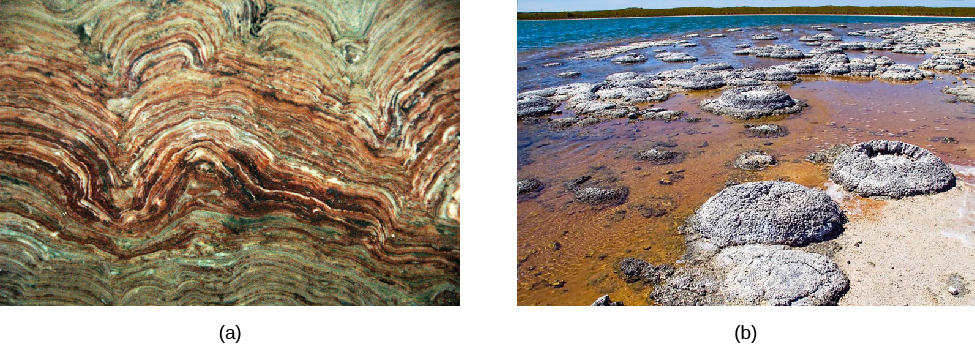| << Chapter < Page | Chapter >> Page > |

The free oxygen produced by photosynthesis began accumulating in our atmosphere about 2.4 billion years ago. The interaction of sunlight with oxygen can produce ozone (which has three atoms of oxygen per molecule, as compared to the two atoms per molecule in the oxygen we breathe), which accumulated in a layer high in Earth’s atmosphere. As it does on Earth today, this ozone provided protection from the Sun’s damaging ultraviolet radiation. This allowed life to colonize the landmasses of our planet instead of remaining only in the ocean.
The rise in oxygen levels was deadly to some microbes because, as a highly reactive chemical, it can irreversibly damage some of the biomolecules that early life had developed in the absence of oxygen. For other microbes, it was a boon: combining oxygen with organic matter or other reduced chemicals generates a lot of energy—you can see this when a log burns, for example—and many forms of life adopted this way of living. This new energy source made possible a great proliferation of organisms, which continued to evolve in an oxygen-rich environment.
The details of that evolution are properly the subject of biology courses, but the process of evolution by natural selection (survival of the fittest) provides a clear explanation for the development of Earth’s remarkable variety of life-forms. It does not, however, directly solve the mystery of life’s earliest beginnings. We hypothesize that life will arise whenever conditions are appropriate, but this hypothesis is just another form of the Copernican principle. We now have the potential to address this hypothesis with observations. If a second example of life is found in our solar system or a nearby star, it would imply that life emerges commonly enough that the universe is likely filled with biology. To make such observations, however, we must first decide where to focus our search.
Just how did life arise in the first place? And could it have happened with a different type of chemistry? Watch the 15-minute video Making Matter Come Alive in which a chemistry expert explores some answers to these questions, from a 2011 TED Talk.
Among the staggering number of objects in our solar system, Galaxy, and universe, some may have conditions suitable for life, while others do not. Understanding what conditions and features make a habitable environment —an environment capable of hosting life—is important both for understanding how widespread habitable environments may be in the universe and for focusing a search for life beyond Earth. Here, we discuss habitability from the perspective of the life we know. We will explore the basic requirements of life and, in the following section, consider the full range of environmental conditions on Earth where life is found. While we can’t entirely rule out the possibility that other life-forms might have biochemistry based on alternatives to carbon and liquid water, such life “as we don’t know it” is still completely speculative. In our discussion here, we are focusing on habitability for life that is chemically similar to that on Earth.

Notification Switch
Would you like to follow the 'Astronomy' conversation and receive update notifications?